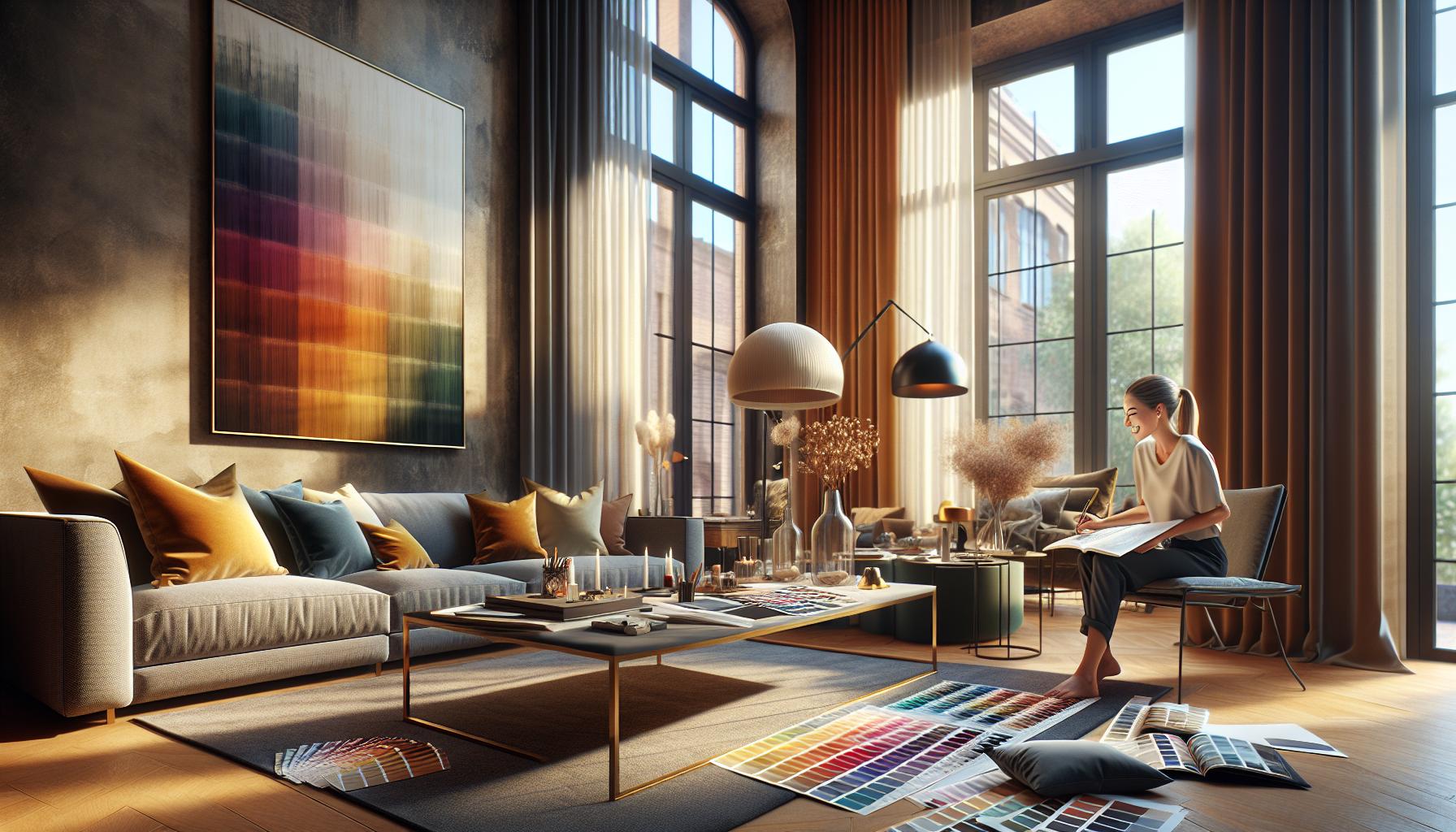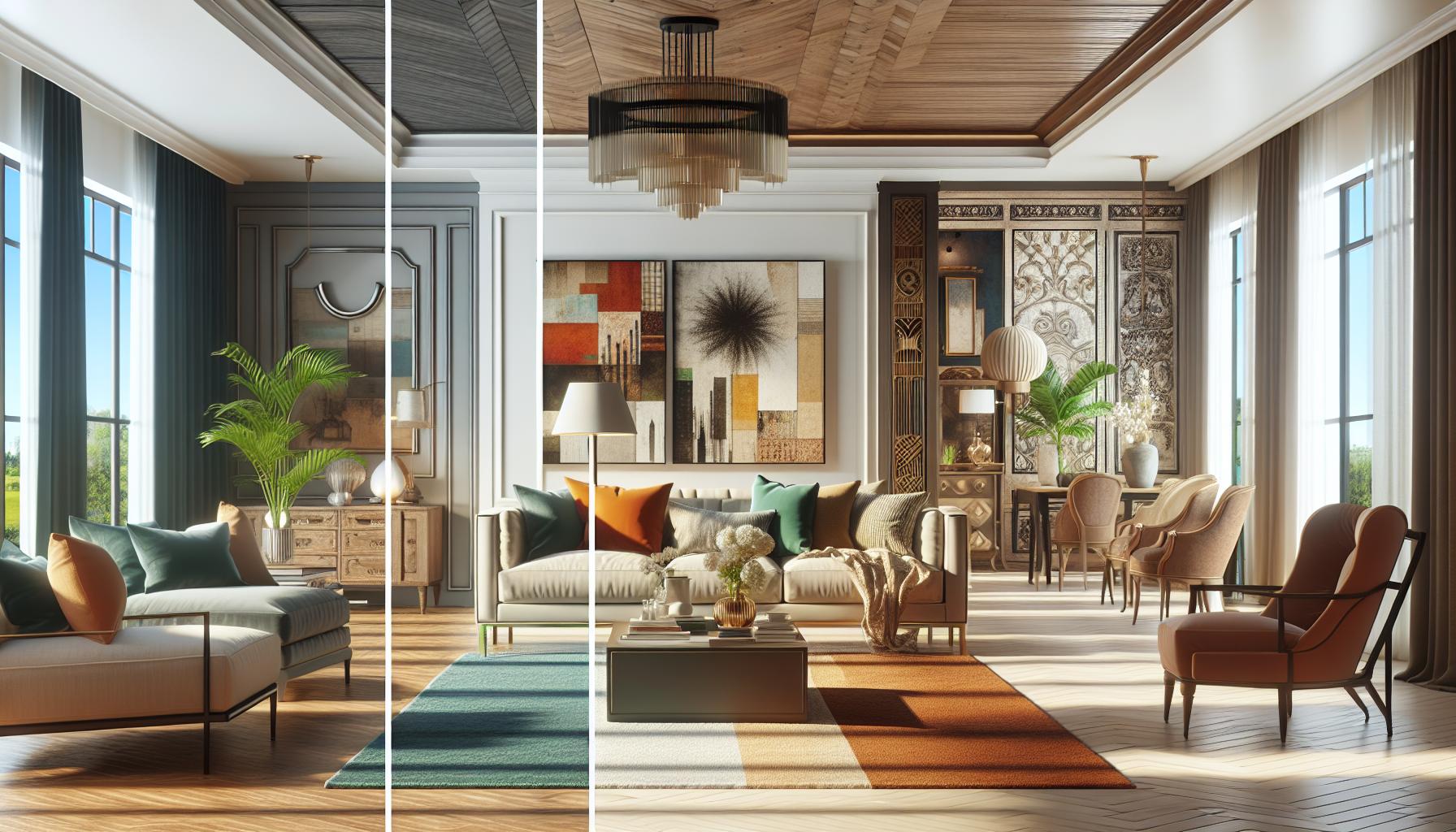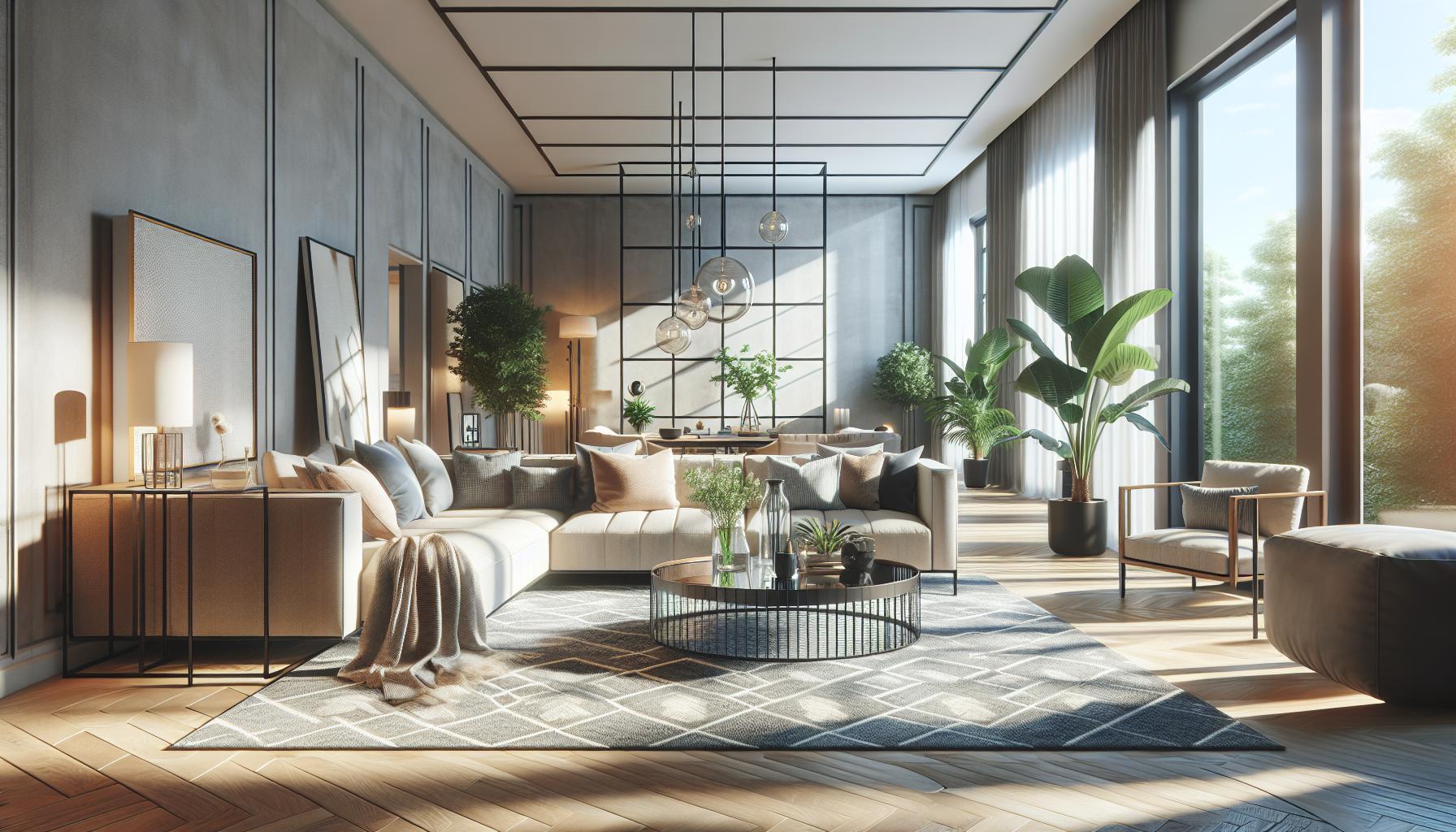 Interior design is more than just arranging furniture or picking paint colors; it’s about creating spaces that reflect personal style and enhance functionality. Whether it’s a cozy apartment or a sprawling house, the principles of interior design can transform any environment into a harmonious sanctuary.
Interior design is more than just arranging furniture or picking paint colors; it’s about creating spaces that reflect personal style and enhance functionality. Whether it’s a cozy apartment or a sprawling house, the principles of interior design can transform any environment into a harmonious sanctuary.
Understanding the basics can empower anyone to make informed choices that elevate their living spaces. From color theory to spatial planning, mastering these elements can lead to stunning results. This guide to Interior Design 101 will explore essential concepts that can help anyone start their journey toward a beautifully designed home.
Key Takeaways
- Interior Design Fundamentals: Interior design merges aesthetics with functionality, transforming spaces into personalized sanctuaries that enhance quality of life.
- Key Design Principles: Balance, contrast, rhythm, scale, proportion, harmony, and unity are essential principles that guide effective interior design.
- Importance of Color Theory: Understanding color theory is crucial, as color choices influence mood and atmosphere, impacting the overall feel of a space.
- Effective Space Planning: Thoughtful space planning ensures optimal functionality and flow, accommodating various activities and enhancing the usability of spaces.
- Selecting the Right Style: Familiarity with different design styles—modern, traditional, and eclectic—enables individuals to create environments that resonate with personal aesthetics.
- Planning and Budgeting: Successful interior design projects start with setting clear goals and a realistic budget, ensuring informed decisions throughout the design process.
Interior Design 101
Interior design combines aesthetics and functionality to create spaces that enhance quality of life. Understanding its core elements empowers individuals to transform any environment into a personalized sanctuary.
The Importance of Interior Design
Interior design plays a crucial role in establishing visual appeal and practicality within spaces. Effective design contributes to emotional well-being, as pleasing environments reduce stress and stimulate creativity. Studies show that well-designed spaces can also increase property value by 10-15%. Thoughtfully arranged furniture and colors enhance not just the space’s look but also its usability, fostering a more organized and efficient lifestyle.
Key Principles of Interior Design
Key principles guide interior design, ensuring coherence and harmony in spaces. These principles include:
- Balance: Achieving equilibrium through symmetrical or asymmetrical designs creates a sense of stability.
- Contrast: Employing different colors, textures, or shapes adds interest and depth to a space.
- Rhythm: Utilizing patterns or repetition leads the eye throughout the room, establishing a cohesive flow.
- Scale and Proportion: Ensuring furniture and decor are appropriately sized maintains harmony within the space.
- Harmony and Unity: Coordinating colors, materials, and styles promotes a harmonious atmosphere that ties the space together.
Understanding and applying these principles lays the foundation for successful interior design, allowing individuals to craft environments that are both beautiful and functional.
Elements of Interior Design

Interior design encompasses several core elements that work together to create functional and aesthetically pleasing spaces. Understanding these components helps in crafting environments that reflect personal style and meet practical needs.
Color Theory
Color theory plays a crucial role in interior design, impacting mood and atmosphere. Designers utilize color wheels to identify complementary colors, ensuring harmonious combinations. Warm colors, such as reds and yellows, evoke energy and warmth, while cool colors, like blues and greens, promote calmness. Neutrals serve as versatile backgrounds, enhancing the overall design. When selecting colors, designers consider factors like room orientation, natural light, and the intended use of the space. Applying the principles of color theory fosters visual cohesion and enhances emotional well-being.
Space Planning
Space planning involves the strategic arrangement of furniture and elements within a space. Effective space planning maximizes functionality by ensuring adequate circulation and access. Designers assess room dimensions and furniture scale to create balanced layouts that accommodate activities. Zoning is another key aspect, allowing for delineation between areas, such as living and dining spaces. Utilizing tools like floor plans and 3D modeling software streamlines the planning process, ensuring an efficient and visually appealing arrangement that optimizes the available space.
Furniture and Accessories
Furniture and accessories serve as essential elements in interior design, contributing to both functionality and style. Each piece must align with the overall design theme while fulfilling specific needs. When selecting furniture, designers consider scale, proportion, and material to ensure a cohesive look. Accessories, including rugs, art, and decor items, enhance personalization and texture. Layering accessories creates visual interest and depth, enriching the overall design. Thoughtfully chosen furniture and accessories enhance the character and usability of a space, making it both inviting and practical.
Different Styles of Interior Design

Interior design encompasses various styles, each offering unique aesthetics and functionality. Understanding these styles enables individuals to create spaces that resonate with their personal preferences and lifestyles.
Modern Design
Modern design focuses on simplicity and minimalism, featuring clean lines and functional furniture. It often uses a neutral color palette, emphasizing functionality over ornamentation. Materials like glass, metal, and wood dominate this style, which values open spaces that promote a sense of flow. Furniture in modern design typically combines comfort with sleek design, fostering an uncluttered environment.
Traditional Design
Traditional design draws inspiration from classic European decor, characterized by rich colors and ornate details. It incorporates timeless furniture pieces, often made from dark woods, and elegant textiles such as silk and velvet. This style values symmetry and balance, creating a welcoming and cohesive space. Accessories like intricate moldings, large area rugs, and wall art enhance the traditional aesthetic, reflecting a sense of history and sophistication.
Eclectic Design
Eclectic design blends various styles, textures, and colors to create a personalized environment. It embraces diversity, allowing for a mix of vintage and contemporary pieces that reflect individual interests. This style encourages creativity and experimentation, often featuring bold patterns, contrasting colors, and unique accessories. The goal is to achieve visual harmony despite the variety of elements, showcasing a curated look that speaks to personal taste and storytelling.
Getting Started with Your Interior Design Project

Starting an interior design project requires careful planning and reflection. Establishing clear goals and a budget serves as the foundation for a successful design journey.
Setting Goals and Budget
Setting specific goals guides the design process. Identifying priorities, such as maximizing space, updating aesthetics, or enhancing functionality, creates a focal point for decisions. Budgeting is equally important; it defines the scope of the project. A detailed budget should encompass costs for materials, furnishings, labor, and potential contingencies. Crafting a budget that aligns with goals ensures realistic expectations and aids in decision-making. Tracking expenses throughout the project prevents overspending.
Choosing a Color Palette
Choosing a color palette shapes the mood and character of a space. Start by considering the overall purpose of the room. Neutral tones often promote relaxation, while bold colors can energize a space. Utilizing a color wheel assists in creating harmonious combinations, facilitating the selection of complementary or contrasting colors. Assess room orientation and natural lighting, as these factors affect how colors appear. Testing paint samples on walls helps visualize the final outcome, ensuring the chosen palette aligns with the intended atmosphere and personal style.
Common Mistakes in Interior Design
Interior design mistakes often stem from a lack of foresight and poor planning. Understanding common pitfalls can enhance the overall design process and lead to better results.
Skipping the Planning Phase
Skipping the planning phase results in disorganized spaces and wasted resources. Designers and homeowners often overlook the importance of creating a comprehensive layout, which includes identifying goals, understanding the room’s function, and selecting appropriate materials. Establishing a clear plan helps determine furniture placement, color schemes, and decor choices, ensuring cohesive design that fits personal preferences and lifestyles.
Overcrowding a Space
Overcrowding a space detracts from its functionality and aesthetic appeal. Many individuals assume more furniture means more comfort; however, excessive items can lead to cramped environments. Prioritizing essential pieces and allowing for adequate circulation creates a more inviting atmosphere. Striking a balance between necessary elements and open space fosters a sense of tranquility and enhances usability, resulting in well-designed interiors that feel comfortable and spacious.
Creativity and Self-expression
Embarking on an interior design journey opens up a world of creativity and self-expression. By understanding the key principles and core elements of design, individuals can transform their spaces into personal havens that reflect their unique style.
Thoughtful planning and a clear vision are essential to achieving a harmonious balance between aesthetics and functionality. Avoiding common pitfalls ensures that the design process remains enjoyable and rewarding.
With the right knowledge and tools, anyone can enhance their living environment, making it not just beautiful but also practical and inviting. Embrace the process and let your personality shine through every detail.